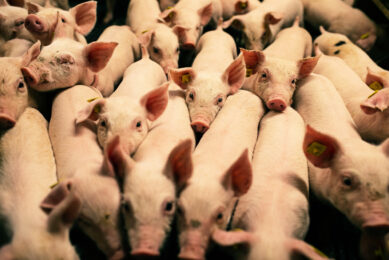Rooting out the problems

Weaning is a time of many changes for young piglets, be it nutritional, environmental or psychological. In nature, weaning occurs at 9-20 weeks, with piglets running through the forest, rooting in the ground, playing with acorns. In a commercial pig farm, where efficiency is the key to profitability, weaning takes place a lot earlier than nature intended, at 3-4 weeks. It is no surprise therefore, that this early weaning process may give rise to some problems.
As you can read in the article ‘How to get every piglet eating’, creep feeding is one solution under continued investigation, which encourages piglets to eat while still under the watchful eye of the sow. The attractiveness of the feed in terms of taste, smell, diversity and recognisability can all have a positive impact on feed intake and the further health and performance of the pigs.
Luckily, a range of other solutions are also on hand to ease this process for both the sow and her offspring. New and innovative methods to ensure performance are of even more importance given the changes to antibiotic and zinc oxide use in pig production. As this special edition highlights, advancements in genomics, nutrition developments and measures to reduce stress have all proven a way to ensure a reasonable feed intake of all piglets as they transition away from their mother’s milk to solid feed. In this stage of their young lives, piglets need to keep eating. A deficiency can lead to gut health problems, so not eating is simply not an option.











